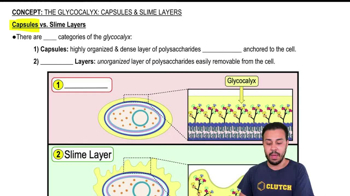One of the characteristics unique to animals is
a. Gastrulation
b. Multicellularity
c. Sexual reproduction
d. Flagellated sperm

 Verified step by step guidance
Verified step by step guidance Verified video answer for a similar problem:
Verified video answer for a similar problem:



 5:58m
5:58mMaster Overview of Animals - 1 with a bite sized video explanation from Jason
Start learning